
เทศกาลมันโทะอุ มิทะมะ ที่ฮิโรชิมะ
Paul Walsh100 มิโกะ พรหมจาริณีของศาลเจ้าร่ายรำท่ามกลางแสงโคมไฟ

Located on the grounds of Hiroshima Castle, Hiroshima Gokoku Jinja (広島護国神社) is a Japanese Shinto Shrine in central Hiroshima City.
"Gokoku" Shrines are Shinto shrines designated as places of worship for those who have died in war. Like the controversial Yasukuni Shrine in Tokyo, what became Hiroshima's Gokoku Shrine was also originally constructed in 1868 to commemorate the Hiroshima Han victims of the Boshin War. Seventy-eight souls were enshrined in the Futabanosato shrine, named Mikureisha (水草霊社).
Eventually, the total number of souls enshrined there reached 92,700, including the soldiers from the former Aki no kuni (now western Hiroshima Prefecture) who died in Japan's wars up until the start of the Great East Asian War (as World War 2 post Pearl Harbor is known in Japan) and around 10,000 workers and volunteer corps who were stationed in Hiroshima and lost their lives to the A-Bomb.
In 1934 it was dismantled, rebuilt and renamed Kansaishoukonsha (官祭商塊社), and moved to a corner of the west of the military parade ground, where the Hiroshima Municipal Baseball Stadium stood until the end of 2008. In 1939, its name was changed by order of the Interior Ministry to the Hiroshima Gokokujinja. In 1945 it was destroyed by the atomic bomb, and was rebuilt on the current site within the grounds of Hiroshima Castle in 1956 with the aid of donations from the citizens of Hiroshima.
The current main building is even more recent, rebuilt in 1995, when the grand stone slab approach was also added.
Events at the shrine are held throughout the year.
Gokoku Shrine can be found within the main castle grounds of Hiroshima Castle.
By train/streetcar: Hiroshima Castle is about a 10-minute walk north from the downtown area, including Kencho-Mae Station (Astram Line) or Kamiyacho-higashi stop (Hiroden streetcar).
Meipuru-pu: sightseeing bus The castle is also on the route for the Hiroshima sightseeing loop bus, Meipuru-pu, which starts from Hiroshima Station. The castle is a 6 minute ride and the second stop on the route.
By foot: The castle is about 10-15 minutes walk from both Peace Park and Shukkeien Garden. By foot, it can form part of an ideal day itinerary.

100 มิโกะ พรหมจาริณีของศาลเจ้าร่ายรำท่ามกลางแสงโคมไฟ
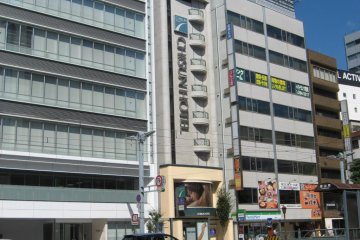
โรงแรมชิซุน ฮิโรชิม่าซึ่งตั้งอยู่ตรงกลางเมืองเป็นสถานที่ที่ดีต่อการพักอาศัยถ้าคุณกำลังวางแผนไปเยี่ยมชมเมืองที่โด่งดังระดับโลกแห่งนี้
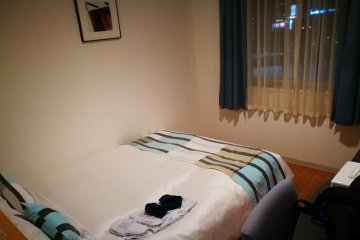
Hotel Flex เป็นโรงแรมที่ตั้งอยู่ริมแม่น้ำที่เกิดการบรรจบกันของแม่น้ำเคียวบาชิและแม่น้ำเอนโก วิวริมแม่น้ำถือเป็นจุดเด่นของโรงแรมแห่งนี้ สำหรับใครที่มาเที่ยวเมืองฮิโรชิมา แล้วอยากพักโรงแรมแบบสบายๆราคาเอื้อมถึง ขอให้ลองมาเข้าพักที่นี่ดู ชั้นล่างเป็นคาเฟ่ที่ถูกตกแต่งด้วยโทนสีสบายตา เข้ากับบรรยากาศริมแม่น้ำ ช่วงสายๆบ่ายๆ จะมีคนท้องถิ่นเข้ามานั่งพูดคุยจิบชา เพลินเพลินกับลมเย็นๆและบรรยากาศสบายๆ ห้องพักมีสิ่งอำนวยความสะดวกครบครัน แถมไม่ต้องเอาชุดนอนมาเพราะที่นี่มีชุดนอนลายน่ารักๆเอาไว้ให้ด้วย นอกจากนี้ เตียงยังมีขนาดใหญ่สำหรับนอนคนเดียวหรือสองคนได้อย่างสบาย ห้องค่อนข้างใหม่และสะอาด สามารถมองเห็นวิวยามค่ำคืนของเมืองฮิโรชิม่าได้ ข้างๆโรงแรมมีร้านสะดวกซื้อและร้านอาหารมากมาย ไม่ต้องกลัวหิว วิธีเดินทางมาก็สะดวก คือ เดินจากสถานีฮิโรชิมามาประมาณ 10 นาที แถวโรงแรมมีศูนย์เช่าจักรยานด้วย สามารถเช่าปั่นเล่นได้

Santiago Guesthouse Hiroshima เป็นที่พักฮิปๆสไตล์แบคแพคเกอร์ ผู้เข้าพักที่นี่ส่วนใหญ่เป็นวัยรุ่นต่างชาติที่แบคแพคในญี่ปุ่น ที่พักแห่งนี้ถือว่าราคาถูกมากถ้าเทียบกับโรงแรมชั้นกลาง หากลองเปรียบเทียบราคาแล้วถือว่าถูกกว่าเกือบครึ่งนึงเลยทีเดียว
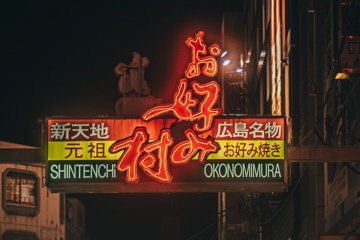
Okonomimura is a Hiroshima-style okonomiyaki theme park located in Shintenchi, Naka-ku, Hiroshima, near the east end of the Hondori shopping street. It has 24 okonomiyaki restaurants, each with a slightly different style and one different selection of ingredients. Okonomiyaki began in the pre-war period as a dish called "Issen Yoshoku" ("" Western food for a dime ""), which was very popular with common people. It consisted of a flour paste cooked with onions, dried shrimp, and spices. After the war, other ingredients such as cabbage, eggs, seafood, buckwheat and wheat noodles were used to improve the diet in these tough times. This is how today's Hiroshima-style okonomiyaki came about. [Photo: Victor Lee / CC BY-NC-ND 2.0]

ถ้าคุณชอบอาหารญี่ปุ่นและชอบกินผัก รับรองว่าคุณจะเพลิดเพลินกับอาหารอร่อยๆที่ร้าน NonoBudou ที่ซึ่งเป็นระเบียงสวนธรรมชาติ
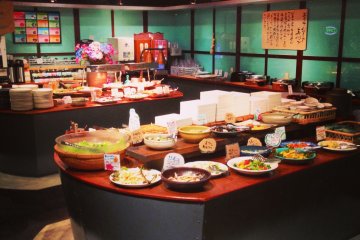
ผักสดๆจากฟาร์ม ชาบูชาบู และที่นั่งเหลือเฟือ... สิ่งเหล่านี้ทำให้ร้าน Roan เป็นร้านบุฟเฟต์ที่สูงกว่ามาตรฐานทั่วไป
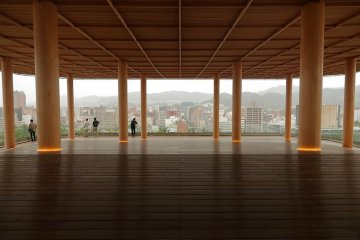
With its beautiful skylines and active waterways, Oizuru Tower offers its visitors a way to see all of that activity—day or night—unobstructed by glass or rails. The wooden floors and ceilings give off a gentle warmth and the pillars that support the ceilings also provide beams of light. Instead of glass or railings, guests can feel the Hiroshima air wash over them thanks to the stainless-steel net fence. With unobstructed views of Hiroshima, including the Peace Memorial Park and the Atomic Bomb Dome (and even Mount Misen of Miyajima on clear days), the tower offers viewers a way to feel at one with the city. Hiroshima Oizuru Tower is also home to an assortment of shops and cafés. Visit the first floor to find that special souvenir of one of Hiroshima’s local products at Hito to Ki. You’ll also find Hiroshima-style okonomiyaki in Akushu Café—including unique wrap-style okonomiyaki. On the 12th floor, you can also fold your own origami crane and leave it on the Oizuru Wall with your well wishes for the future. From the 12th floor to the 1st floor, there is a slide “cool-cool-cool” that runs alongside the spiral staircase. Why not try sliding your way down twelve floors—or just a couple, as you can exit in between floors. While you take a walk inside, browse the original comic created by Shuho Sato—manga artist of “Umizaru” and “Say Hello to Black Jack”—the works inside Oizuru Tower reflect on the theme of peace. No matter what you decide to do, you’ll be delighted by the spaces and experiences that you can create. Discover the past, present, and future of Hiroshima while you gaze out at this bustling city.

พร้อมกับพิพิธภัณฑ์อนุสรณ์สันติภาพ โดมปรมาณู (Atomic Bomb Dome) ฮิโรชิมะได้กลายมาเป็นสัญลักษณ์ของสันติภาพ ที่มีนักท่องเที่ยวเข้าชมจากทั่วทุกมุมโลก ฮิโรชิมะได้กลับสภาพมาเป็นเมืองที่สวยงดงามอีกครั้งหนึ่ง และโดมปรมาณูก็เป็นเครื่องพิสูจน์ถึงความสามารถในการกลับคืนสู่สภาพเดิมของผู้คนในฮิโรชิมะ ยืนอยู่โดดเดี่ยว แต่รายล้อมด้วยอาคารตึกระฟ้าสมัยใหม่ มันเป็นสิ่งที่น่าชื่นชมและทำให้เรารู้สึกดีขึ้น ผมไปที่นั่นในวันฝนตกพรำๆ ของปลายเดือนพฤศจิกายน พร้อมๆ กับเด็กนักเรียนเป็นร้อยๆ คนที่มาทัศนะศึกษากับโรงเรียน สายฝนทำให้ทุกสิ่งทุกอย่างดูสดใสและมีชีวิตชีวา ความน่าสะพรึงกลัวยังคงมีให้เห็นอยู่ แต่ที่มีมากกว่าคือ ความหวัง

Shukkeien Garden, located in central Hiroshima City, is a traditional Japanese-style garden loved by visitors and locals alike. This natural oasis among urban life provides a wonderful setting to slow down and rejuvenate among nature. Shukkeien Garden was completed in 1620 as a private garden for one of Hiroshima’s feudal lords (daimyo) and translates to “shrunken scenery garden” in Japanese. Although the garden was severely damaged in 1945 during WWII, it was completely restored to its former grandeur and is known as a National Place of Scenic Beauty. The Edo-period garden is cleverly landscaped to look like miniature mountains, valleys, rivers, bamboo groves, waterfalls, and forests. In the center of the garden, a carp-filled lake features multiple pockets of land that resemble islands. Plants pruned to look like tiny trees sprout from these islands and decorate the surrounding grounds. The pond’s stillness creates a mesmerizing reflection of the area’s natural hues and organic forms. The scenery shines brightest in springtime when the cherry blossoms are in full bloom, and in autumn when the foliage turns vibrant. The garden also has a small stone statue on its northern side to commemorate the people lost during the atomic bombing in 1945. You can view the expertly crafted scenery from a path around the perimeter of the park or in one of the garden’s many tea houses, which hold tea ceremonies year-round.